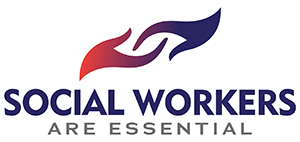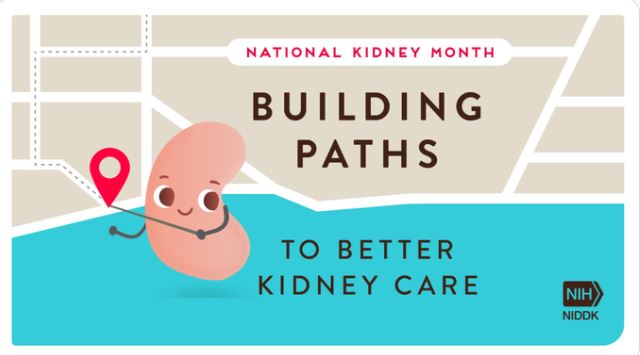
 Social Workers are an especially important part of the work that we do, contributing to our interdisciplinary care teams and helping our patients navigate some of the toughest life challenges. We would like to thank the phenomenal team of Social Workers in our Networks, as well as EdNesha, Ericka and Tausha on our staff, for all you do!
Social Workers are an especially important part of the work that we do, contributing to our interdisciplinary care teams and helping our patients navigate some of the toughest life challenges. We would like to thank the phenomenal team of Social Workers in our Networks, as well as EdNesha, Ericka and Tausha on our staff, for all you do!
The National Institute of Diabetes and Digestive and Kidney Diseases (NIDDK) has developed a one-page resource to help optimize health for persons with kidney disease, focusing on areas such as nutrition, physical activity, and vaccination. If you need a quick, helpful resource for patient education this month, you can find it here.
Transplant
Transplant wait listing is the first step towards receiving a kidney transplant. Once listed, patients can stay “transplant ready” by following a healthy diet, regularly attending dialysis treatments, keeping required tests up to date, and maintaining communication with their transplant team.
CMS Goals:
- Increase patients added to the transplant waitlist
- Increase the number of patients receiving a kidney transplant
Resource: Kidney Transplant Hub
Network Contact: arlandra.taylor@allianthealth.org
Home Dialysis
When it comes to educating patients about home dialysis, consistency is key. Remind patients of the freedoms and benefits they gain from dialyzing at home to help resolve their fears. It is also important to remind patients that they will have continuous support when doing dialysis at home as lack of support is often one of patients’ biggest fears about home dialysis.
CMS Goals:
- Increase the number of new ESRD patients utilizing home dialysis
- Increase the number of incenter patients moving to a home modality.
- Increase the number of rural ESRD patients using telemedicine to access a home modality
Resource: Choosing Home Dialysis
Network contact: maryam.alabood@allianthealth.org
Hospital Admissions, Readmissions, and Emergency Visits
According to the Sepsis Alliance, any time there is a break in your skin, even with a surgical procedure, there is a risk of infection. There are two main causes for hemodialysis access failure: blood clots and infection. Infection in the access is the most common cause of infection among people who undergo hemodialysis.
CMS Goals:
- Decrease the national rate of hospital readmissions
- Decrease hospital 30-day unplanned readmissions
- Decrease the national outpatient emergency department visits
Resource: Infections and Sepsis Prevention
For more information, visit https://www.sepsis.org/sepsisand/dialysis-2/
Network contact: dany.anchia@allianthealth.org
Depression
Caring in a Crisis: Our patients may sometimes experience increased levels of stress and anxiety, which often results in a wide range of emotions and behaviors. Overwhelming levels of stress and anxiety may lead to panic attacks, crying spells, fear, aggression, and agitation.
While the source of these stressors and triggers may be unknown, we are tasked with managing the behaviors and resolving related concerns. The resources below are designed to aid in treating patients who may be experiencing increased levels of stress, fear, or anxiety.
CMS Goals:
- Increase the number of patients accurately screened and treated by a mental health professional for depression.
- Ensure that facilities report depression screening in EQRS.
Resources:
Network 8 Contact: ericka.webb@allianthealth.org
Network 14 Contact: ednesha.smith@allianthealth.org